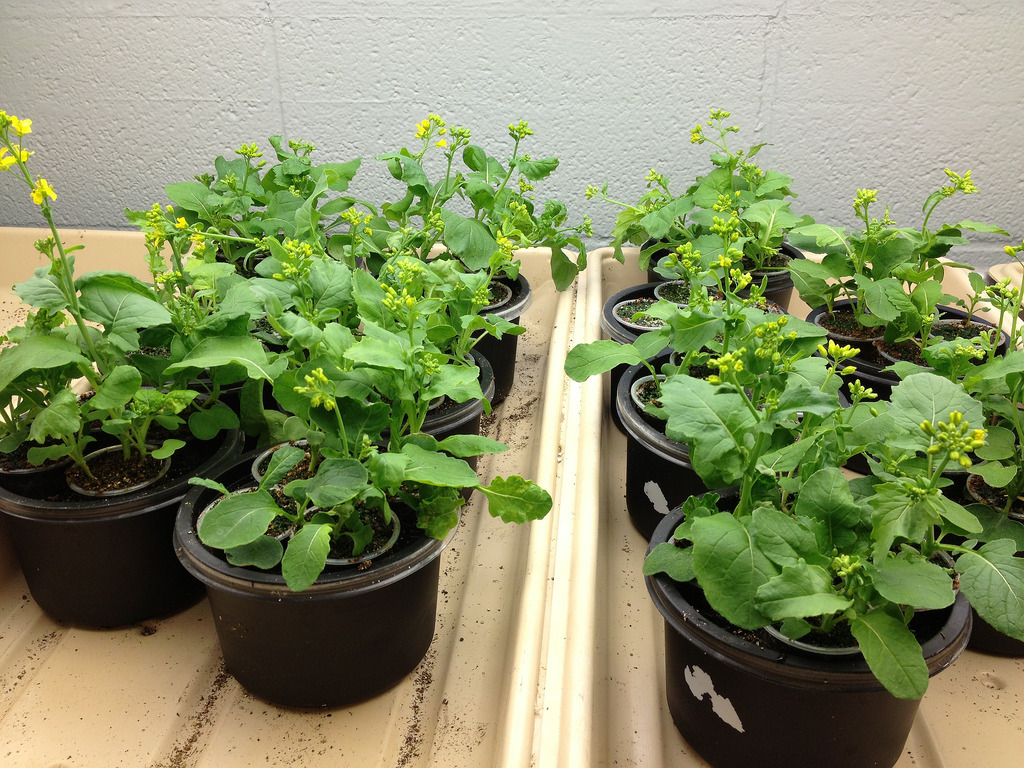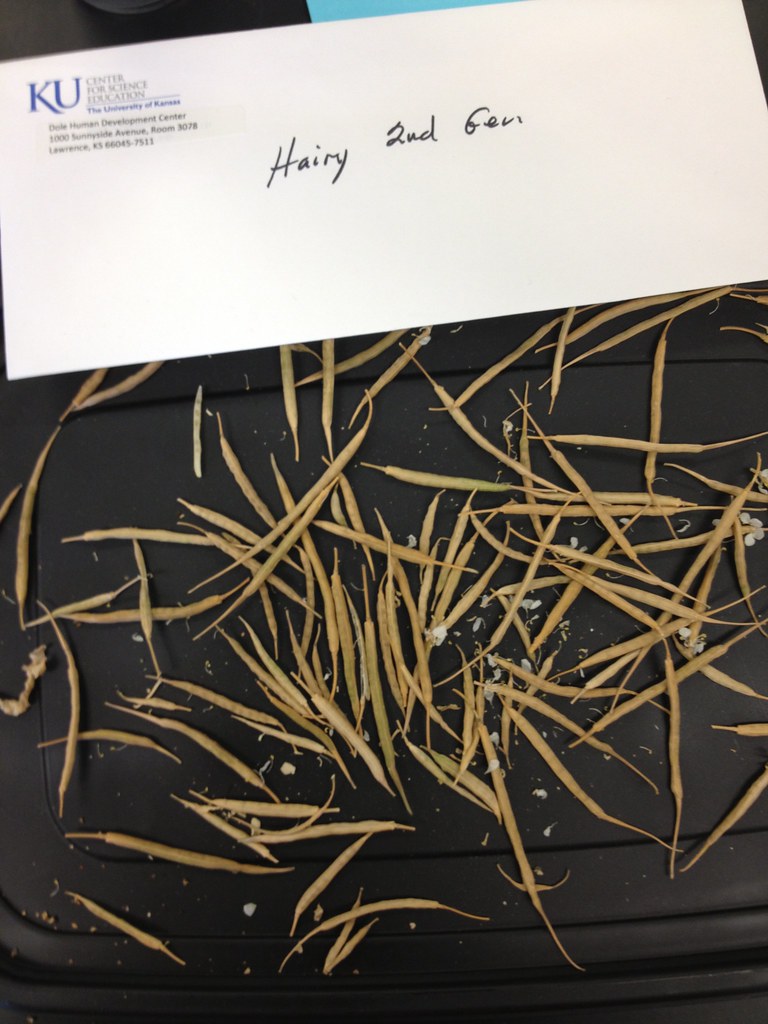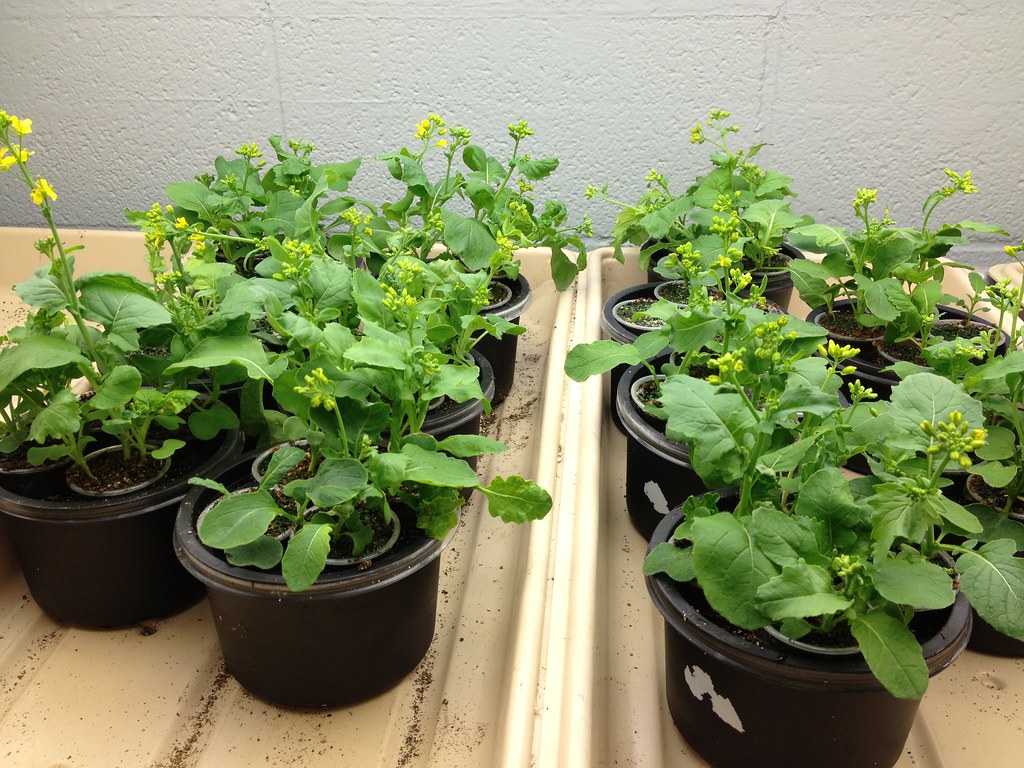Last Fall I completed the first round of an artificial selection experiment using Fastplants similar to one described in the new AP Biology Lab manual. I finally got around to planted, growing and scoring the second generation of seeds selected for higher trichome numbers.
Here are some of the seed pods that I collected and kept stored over the winter in a paper envelope.
I was able to conscript some student labor–a future biology teacher–to help planting the second generation.
This generation seemed to grow more slowly than the first. Today is the 14th day of growing and usually by now most of the plants are flowering. Hmmmm, I wander if the plants are putting so much energy into producing hairs that they have to slow down other processes? They certainly looked like hairier plants but honestly I forgot how hairy the first generation was.
Here’s what the plants looked like today. They not only seem to be a bit behind but they also seem to have quite a bit more plants that haven’t quite developed right. Of course, this population comes from a pretty small parent population so we may already be seeing sign of inbreeding depression—hmmm, sounds like an experiment.
And now for the results (just in graph form) for now. I may follow-up with more analysis later. The error bars on the bar graph represent 2 standard errors and thus serve to approximate 95% confidence intervals. Note that both distributions approximate a normal distribution so we would be safe to use parametric descriptive and inferential statistics.
I’m not putting forth any conclusions right now but you are welcome to.
BW




